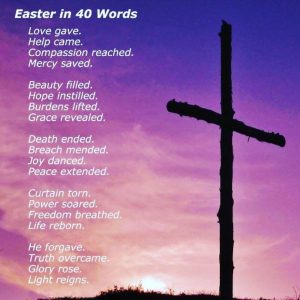Jesus is risen! He is risen indeed!
The fourth Sunday of Easter is Good Shepherd Sunday, and each year the scripture readings include the twenty-third Psalm and a reading from John 10, describing Jesus as the Good Shepherd.
The image of Jesus assures us that we are known and cared for.
In Acts, Peter affirms Jesus’ power to heal and names Jesus as the cornerstone of faith.
First John points to the human response to the shepherd’s love, reminding us to love one another in truth and action.
Psalm 23
Psalm 23 is perhaps the most well-known and beloved of the psalms. It describes the relationship between God the Shepherd and the psalmist David. It’s easy to see why this psalm would be beloved; it’s a beautiful and comforting description of the most trusting of relationships. Scholars have called it a “Song of Trust”. The Shepherd guides, refreshes, and nourishes the sheep. Nothing is lacking. And everything provided by the Shepherd is the best. “Green pastures” versus sparse ones, water that is safe and restorative as opposed to rushing torrents or stagnant pools. The Shepherd guides the sheep in the right direction, instead of dangerous ones. Even with trouble all around, God is present and protecting, and God’s care is plentiful.
In Hebrew, “mercy” is sometimes translated as “loyal love,” indicating a covenantal relationship with all of the obligations of deep commitment. It’s a two-way relationship, but one in which the sheep – us – are blessed with all of the best God has to offer.
John 10:11-18
The fourth of seven I Am – revelations of Jesus
I AM…The Bread of Life
I AM…The Light of the World
I AM…The Gate for the Sheep
I AM…The Good Shepherd
The fourth of seven revelations of Jesus follows immediately at the heels of the third and stays within the world of sheep and shepherds.
In it, Jesus declares himself to be “the good shepherd.” This metaphor is deeply rooted in Old Testament imagery, which was full of good shepherd-kings, like David, who brought peace and prosperity, as well as evil shepherd-kings who brought destruction (Ez. 34). The greatest Old Testament shepherd metaphor was, of course, reserved for God himself (Psalm 23).
With this pronouncement, Jesus clearly announces that the salvation promised when God would finally do away with evil shepherds and establish himself as the ultimate Good Shepherd was happening in the person of Jesus, and that the victory of the shepherd-king would come in, giving up his life for the sheep.
“I came so that they could have life – indeed, so that they could live life to the fullest”.
‘Living life to the fullest’ frames the rest of what a Good Shepherd does.
Gives motivation for all Jesus does.
Why does Jesus lay down his life? So we may live life to the fullest.
“I am good shepherd” is a bold statement. In all images in Scriptures of the Shepherd, God is always the good shepherd – or Cyrus (Isaiah 44:28)
Good Shepherd:
Lays down his life for the sheep
Knows his sheep
Sheep know him
“Lays his life down” is more than the Cross.
God desires unity, and God is willing to go to any length for it as we see in the theme of laying down one’s life that threads throughout today’s readings.
Jesus’ desire for unity demonstrates his commitment and great love. He gives his life voluntarily; no one takes it from him.
He does this in order to gather all his sheep into one inclusive gathering of all of God’s people.
There is great hope in this promise, this yearning, because, as Jesus says, just as he gives his life, so can he take it back again.
As this desire to be united provided hope for the Gentiles and others, so too does it provide hope for those on the margins today.
EASTER – when hope came alive!

